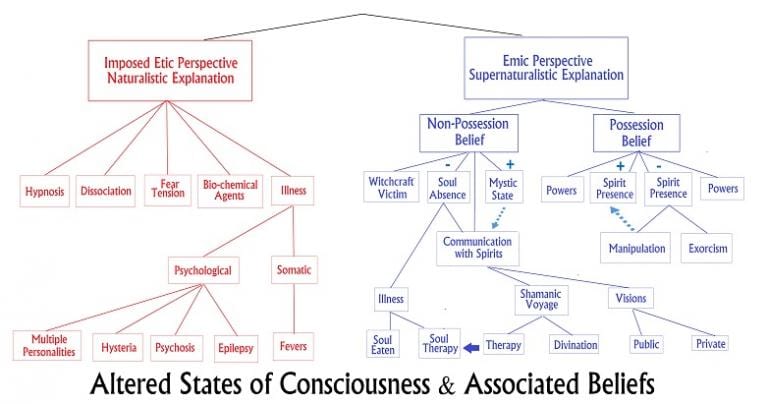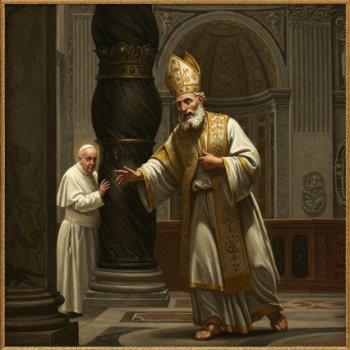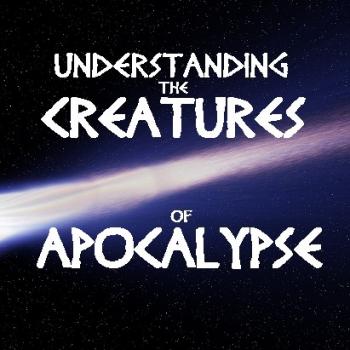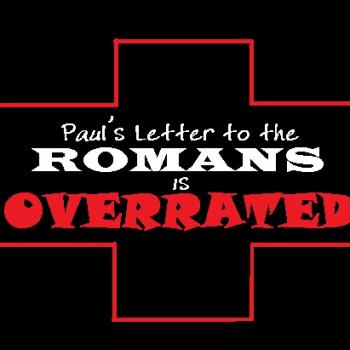
Believers were given the fantastic vocation at baptism to become a holy person—but what does that mean biblically?
What a challenge 21st century Catholics receive reading the Synoptic Gospels, Paul, and “John.” How can we ever really be imitators of saints like Paul? We cannot really accomplish the works Jesus did, can we? How could we ever perform “greater works than these”?
Throughout the Hebrew Scriptures, the God of Israel engages in two great activities Greek-speakers rendered as erga, or “works.” These were creating the world (giving life) and redeeming Israel (restoring meaning to life). By creating, God bestowed life. By liberating the Israelites, God restored meaning to human life. The Johannine Jesus referred to his marvels as erga or works (John 5:36; 14:12). Therefore, the Johannine Jesus group behind the Fourth Gospel saw a relationship between what Jesus and his disciples do and what God does in creation and redemption. The latter energized the former.
The Johannine Jesus says something perhaps unbelievable to 21st century Americans—
John 14:12
“Amen, amen, I tell you, the one who believes into me will also do the works (ta erga) that I do and, in fact, will do greater works than these…”
Wild! But is it really possible to do the wondrous works of Jesus? Can we ever really be like the Twelve and Paul? Perhaps, illuminated by the social sciences like medical anthropology, we might discover a clue. With that in mind, watch the video here.
Jesus, the Holy Person
“Holy Man” is one of the earliest titles given to the Galilean peasant, Jesus of Nazareth, by the Gospel tradition (Mark 1:24). Following the research of Dr. John Pilch, “holy man” is what anthropologists call a “shaman.” This is a term taken from the Tungus people and used for all holy persons (men or women) wherever on earth. Indeed, from whatever culture, two qualities mark every holy person. First, they can readily access the spirit world (or “Alternate Reality”). Second, they are quite familiar with the spirit world via many experiences (altered states of consciousness). Beyond that, holy persons are intermediaries between the worlds, brokering favors for those “down here,” primarily healings.
Pilch explains that the shaman or holy person is someone filled with spirit who is an ecstatic healer. Let’s break that down. “Filled with spirit” means they are adept at experiencing spirit-induced phenomena called altered states of consciousness, and they are adept at inducing these in others. “Ecstatic” refers to their ability to enter into the divine realm or spirit world, what we might call “Alternate Reality,” via an ASC experience.
Perception of ASCs by WESTERN PEOPLE VS BIBLICAL PEOPLE

“Healer” means someone who restores meaning and wellbeing to human life, whether or not the sick person’s physical condition improves. I should point out that biblical stories such as Luke 4:38-39 lack any interest in the biomedical causes of illness or whether the condition recurred later. Gospel stories about Jesus’ erga concern healing, not curing. Jesus and his disciples weren’t 21st-century scientists or medical professionals. They healed people. In other words, they restored meaning to human life.
Why do many miss this? Pilch and other Context Group scholars explain that many Western exegetes and theologians are wrong to primarily focus on Jesus’ sayings. For example, if Robert Funk and his Jesus Seminar began instead with the doings of Jesus rather than his sayings, they would have arrived at a completely different Jesus. The Jesus of the Gospels is a Middle Eastern shamanic folk healer, not their congenial favorite, the Western intellectual sage.
Holy Person & Healer
The Gospels summarize Jesus’ healing erga, marvels the Synoptic Tradition calls “mighty deeds” (Mark 9:39; see Mark 1:34; Matthew 11:4b-5). Leave aside science-based biomedical concerns for disease when reading these stories, folks. Whatever condition the sick Jesus encountered had, they were made unclean by it (Leviticus 19:2; cf. 11:45; 20:7; 21:16-24). Therefore they were excluded from God and God’s people—this is a catastrophic loss of meaning (Leviticus 13:46). Thus, all sickness problems in the Bible are ultimately purity problems.
Six-Steps To Being a Biblical Holy Person
How did Jesus become a folk healer? Anthropologists identify a six-step program to being a shamanic holy person. Researchers find it in every culture, Jesus’ first-century Israelite society being no exception. Scholars like Pilch see a panhuman process by which someone gets called and initiated into this way of life. Let’s apply it to Jesus.
By the way, accepting these truths about Jesus and human existence does nothing harmful to our Christian belief in his divinity. It just means taking Incarnation seriously, which demands taking the prefix “IN” of Incarnation seriously.
Step One: Contacted by the Spirit World
Pilch explains that the first step to being a shamanic healer/holy person is that the spirit world must first contact you. Wanting to be a shaman doesn’t make you one. A spirit must take the initiative by adopting you or possessing you (the same thing).
When did this happen to Jesus? When he was baptized by John (Mark 1:11)—
“You are my Son, the Beloved; with you, I am well pleased.”
In the second step, the adopting or possessing spirit identifies itself. Notice the words of the bat qol, probably an ASC experience of thunder (cf. Psalm 29:3-9; John 12:28-29). God calls Jesus “son.” Therefore, God identifies himself as Jesus’ Mediterranean patron or spirit world “Father.”
Notice the honor poured out on Jesus! He’s “beloved,” which, in the cultural world of the Bible, means “attached.” So God is attached to Jesus, stuck to him like a Mediterranean father or patron is to a loyal son. For a Galilean peasant who shamefully abandoned his village, where many would have considered him a bastard given memories of his mother’s mysterious pregnancy, this is an outrageous claim. Still, who can argue with sky vault, the very throne of God?
Perhaps another son of God would.
Step Two: Acquiring Shamanic Skills
That brings us to the third step in becoming a holy person. Pilch says that the shaman must acquire ritual skills to safely navigate the spirit world. He or she must suffer a trial by ordeal. The extraordinary claims about Jesus at his baptism lead him to his honor-test. Is he really the son? Will he persist in loyalty, or break?
So Jesus is driven out into the inhuman parts of the land to face a spirit in a test (Mark 1:12-13; Matthew 4:1-11; Luke 4:1-13). The shaman or holy person must be able to deal with spirits without being harmed by them. A fine example of a Middle Eastern male as well as a holy person, Jesus passes his test with flying colors. Step three in the bag!
Step Four: Teachers for the Holy Person
The fourth step explains how Jesus, fully human, acquired these skills. Because such skills aren’t innate, people must learn them, folks. But who does the teaching? Pilch explains that as the fourth step—the shamanic holy person requires teachers, at least one human person, and one other-than-human-person (a spirit).
The anonymous author we call “Mark” notes that when Jesus’ trials had finished, “angels waited on him” (1:12). Pilch illustrates that besides feeding him, these spirits were also tutoring him. Therefore, anthropologists call such beings “spirit guides.”
But Jesus, like every shaman, also had a human teacher. Who could this be other than John the Baptist? The Fourth Gospel preserves a snippet of an embarrassing memory that Jesus had been, for a while, John’s disciple (John 3:22-24). John was himself a shamanic holy man. Therefore he taught Jesus skills necessary to overcome threats in the spirit world.
Step Five: Growing Familiar
According to Pilch, step five for becoming a shaman requires deepening their familiarity with the adopting or possessing spirit. We see this also in the life of Jesus.
Let’s imagine walking in the sandals of the prepaschal Jesus. The Evangelists are more or less spin-meisters and go to great lengths to polish the Jesus Movement’s story. But even they allude to the numerous a$$-whippings Jesus and his followers suffered from many a Galilean village. Being anti-introspective dyadic MENA personalities, these peasants weren’t Americans having an individualistic psychological self! These collectivists looked to the group for identity and conscience.
But what’s to be done when the ingroup (i.e., Israel) continually rejects you in escalating violence? Seeing Jesus and friends in a culturally plausible way, it’s hardly outlandish to think they would be discouraged. “Maybe we are being shameful? What if we are just poor worthless bastards? Maybe a demon tricked us?”
Encouragement for the Holy Person & Friends
Here is where growing familiarity with the spirit pays off for the holy person. Pilch says for Jesus, we see it on display in the Transfiguration (Mark 9:2-10; Matthew 17:1-9; Luke 9:28-36). Save your time and money flying over to Occupied Palestine, getting hoodwinked into visiting Mt. Tabor. The actual physical location doesn’t matter—the Transfiguration took place in Alternate Reality. Thus Jesus, Peter, and the Zebedee boys experienced an altered state of consciousness experienced by Jesus, Peter, James, and John. Throughout the Bible, God prefers to communicate via ASCs.
In this ASC, God reassures Jesus and his innermost followers of their divine mission. The disciples must listen to Jesus more than the Law (Moses) and the Prophets (Elijah).
Final Step: Continual ASC Experiences
According to Pilch, the sixth and final step of becoming a shamanic holy person is enjoying repeated ASC experiences. Evidence that Jesus had these is everywhere in the Gospels. The God of Israel and Jesus communicate regularly (John 12:27-30). And Jesus never doubts that God always hears him (John 11:41-42). The God of Israel discloses much to Jesus (Matthew 11:25-27).
American Holy Persons?
We come full circle. What about us, 21st-century “disciples”? How can we heal as Jesus heals? We were called to be holy persons when we were baptized, many of us as infants. But outside dreaming and being under a (possibly dubious and harmful) controlled substance, Western people tend to block and suppress panhuman ASC experiences. This really divorces us from our biblical roots, cripples the sacramental experience, and blocks Western believers from experiential familiarity with God, a prerequisite for doing Jesus’ work. Consequently, American Catholics and other Christians face tremendous challenges here.
Look honestly at the world of Trump, 2020. We deal out death all the time rather than healing. Our actions rob meaning from life instead of restoring it. We think of ourselves as God, but we don’t create or redeem the Beloved. Look at the sick and desperate among us. What good are we to them? In many cases, Christians are the worst at healing.
















